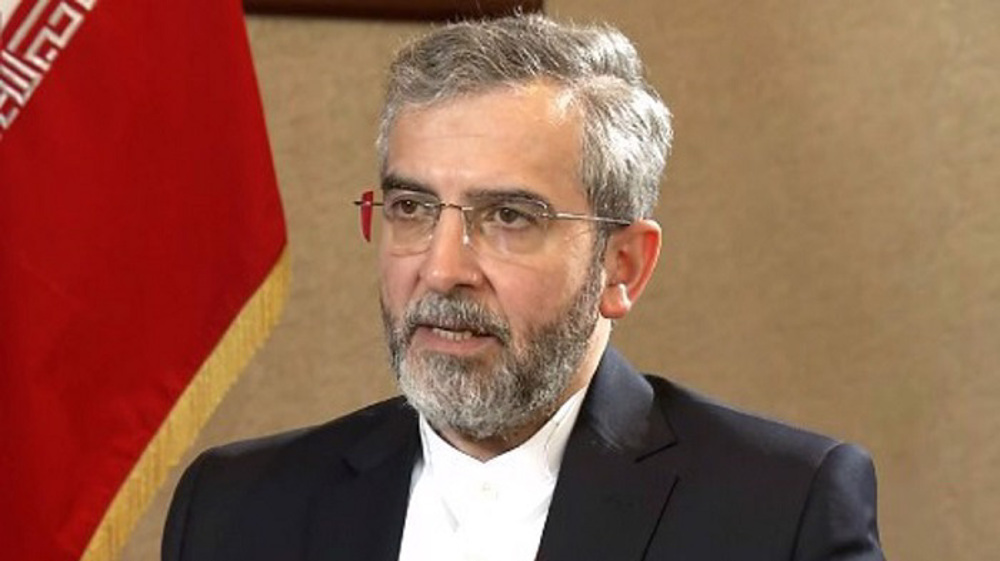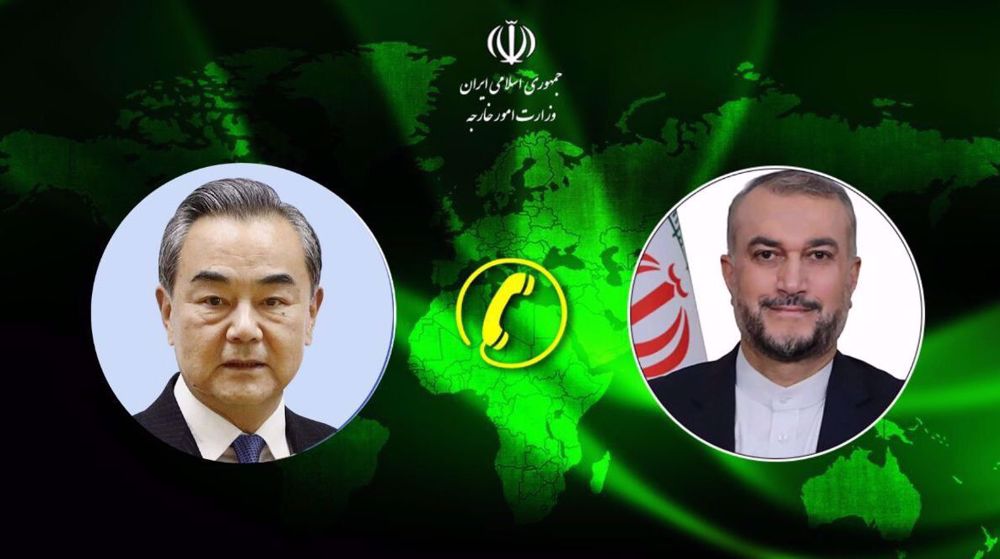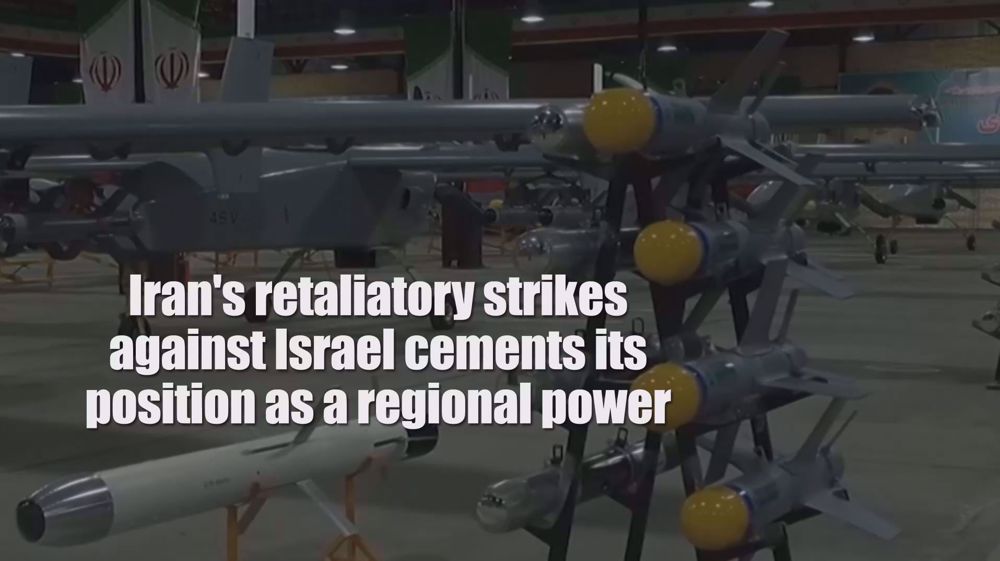How Iranian missiles and drones evaded Israel’s much-hyped air defenses
By Press TV Staff Writer
Iran's retaliation against the Israeli attack on its consulate in Syria was not totally unexpected. However, the meticulous planning and massive scale of the attack marked a watershed moment and the beginning of the end of the occupying regime.
A powerful message was delivered through a barrage of missiles and drones fired at midnight from different Iranian cities, which sent shockwaves in the power corridors of Tel Aviv.
Iranian armed forces first launched Shahed-131/-136 type, low-cost, one-way-attack drones, widely filmed as they flew over Iraq. These drones needed about 6 hours to reach their targets.
About four hours after the Shahed-131/-136 drones were fired, Iran's Paveh land-attack cruise missiles were also launched for simultaneous landing in the occupied land. Both types of weapons represent the Islamic Revolution Guards Corps (IRGC) aerospace forces’ lowest-cost, long-range strike assets.
Their task in this operation was to force the enemy to spend its resources on them, committing its airpower and spending significantly more expensive air-to-air missiles to intercept them.
Here the higher speed of cruise missiles and their unknown quantity forced Israeli, British, Jordanian, and potentially French fighter jets to use air-to-air missiles instead of guns to save time.
The cost ratio between the assets Iran committed to the operation and the Israeli regime required to counter it was massive. Israel's fear of its GPS jamming not working against drones and cruise missiles led to the costly decision of intercepting them kinetically.
Five to ten minutes before the surviving drones and cruise missiles were to reach their intended targets in the occupied territories, Iran launched the main weapons of the ‘True Promise’ operation.
The ballistic missiles were not launched simultaneously on purpose to reduce the shock effect on Israel's missile defenses. Surviving drones and cruise missiles put additional stress on the radars and sensors, creating completely different targets at lower altitudes.
🇮🇱 Ballistic-missile defenses
— Patarames (@Pataramesh) April 12, 2024
🆚
🇮🇷 Ballistic-missile
Arrow-3 effective against:
- Shahab-3
- Ghadr *
- Emad *
-Sejil-2 *
- Dezful
- Qiam-2
- Rezvan
- Khorramshahr-2 *
*(if decoys/chaff/ other pen-aids discriminated by AN-TPY-2)
1/8 https://t.co/ZO6uaX98iX pic.twitter.com/nk1hnXbjIR
This involved ballistic missiles Emad, Ghadr, Dezul and Kheybar-Shekan. The quantity of the launched missiles remains unknown and could range between 60 and 120.
Descending from space like meteors, Ghadr and Emad would have first faced Israel's Arrow-3 missile interceptors, as well as U.S. SM-3. Those older Iranian missiles mainly defend themselves with inflatable decoys in space. The expensive and advanced American AN/TPY-2 could have helped Israel's missile defenses to identify which objects were warheads, which empty spent boosters, and which were decoys.
The 20-year-old Ghadr missile may have created confusion for the radars, as well as guaranteeing their survivability by releasing submunition payload while still in space.
In the chaos of ballistic missiles’ re-entry vehicle housing the warhead, spent booster stages, and submunitions released by Ghadr, Emad missiles would also have released their decoys to survive against Arrow-3 and SM-3.
Once Emad's reentry vehicle enters the atmosphere, they can start to maneuver and alter their trajectory. This is done to increase precision and to perform random evasive maneuvering.
Since Israel can't launch an interceptor for each of the several submunitions of Ghadr, those inaccurate warheads are immune to the interceptors. Emad, however, would rely on a short atmospheric flight time, enabled by a steep dive trajectory, plus random evasive maneuvering.
Arrow-2, Patriot and David-Sling are the systems that tried to intercept the maneuvering Emad’s re-entry vehicles. Emad missiles were also fast and glowing objects descending and impacting at 6-7 times the speed of sound. The slow glowing objects seemed to be the submunitions of Ghadr and the slow objects in flame were likely the separated empty booster stages.
Another missile, Dezful, was apparently launched against Israeli targets in the occupied Golan Heights. Dezful is limited to the northeast part of the occupied territories by its maximum range and can exploit the distance to Israeli missile-defense batteries to perform its mission at Israel's periphery.
No information about those strikes is available but, the low-cost Dezful would avoid coming within Arrow-3 range by flying a relatively low trajectory.
To counter endo-atmospheric interceptors like Arrow-2, Patriot and David-Sling's Stunner, it would randomly maneuver similarly to Emad.
The most advanced ballistic missile known to have been used in the operation is the Kheybar-Shekan. This missile completely avoids Arrow-3 and SM-3 interceptors by flying inside the very upper layers of the atmosphere. Once close to Arrow-2, Patriot and David-Sling, it further descends to engage with the earth's atmosphere to begin random evasive maneuvering by its fins.
Kheybar-Shekan performs its maneuvering in the upper atmosphere layers and once it has slowed down to a certain threshold speed, it dives down at a steep angle. Since it depends on the selected trajectory, its impact speed can be five times the speed of sound, combined with prior maneuvering; some classify it as Iran's first hypersonic weapon.
Kheybar-Shekan and Emad are candidates for some of the very clear impacts, foremost at least five successive hits seen in one of the videos. Other missiles that might have participated are the Rezvan and Haj-Qasem, but no clear launch or spent booster footage of those has appeared as of now.
The targets were Israeli air bases, which represent difficult, highly protected high-value assets of the regime. This target would not be a completely disproportionate response, achieve the retaliation objective and display Iran's missile capabilities to Israel for strategic reasons.
Israel in the past often responded disproportionately against others, due to its military might. Its ballistic missile defense protected its critical military sites against ballistic missiles and its airforce and defense systems like Iron Dome countered air-breathing threats like bomber aircraft.
In that sense it felt a high level of safety against any external attack, attracting multi-billion investments by tech giants like Intel. Israel's overmatch in capability allowed for such fragile industries to come to the conflict region. The inability to protect a critical high-value object like the Nevatim airbase means Iran has the capability to repeat such a salvo against any object in the occupied territories.
Iran's retaliatory strikes against Israel cement its position as a regional power pic.twitter.com/mwav4nk72A
— Press TV 🔻 (@PressTV) April 15, 2024
Iran already displayed the accuracy and destructive power of its ballistic missiles in the salvo against the Ain-al-Assad airbase of the US military in Iraq, which were soft targets. Hence independent of the damage caused, which had to be limited to resemble a proportional response in some way, Iran displayed a capability, very clearly and strongly.
From the limited information available on the targets that were hit in the occupied territories, we see that taxiway sections and aprons were hit in a systematic manner. This is what someone would do if it doesn't want to cause heavy financial damage and keep the response near-proportional.
There is still only limited information about what was hit at the Nevatim airbase or even Ramon air base in occupied Golan amid a complete information blackout imposed by the regime.
Another key aspect of the operation was the effort Iran forced upon the regime, involving aircraft and its operation costs to counter drones and cruise missiles with air-to-air missiles.
Only Israel clearly knows how many interceptors were spent in the observed ripple launches. Only Israel knows about the reserves it has of these several times more expensive counters to the threat. Only Israel knows how well each of the systems, Arrow-3, Arrow-2, Patriot and David-Sling performed and which regions they cover at what quality.
The answer to these questions will tell the Israeli decision-makers if any hot exchange with Iran is feasible or sustainable to achieve their goals. Besides the prior warning, salvo-size and selected targets, Iran has also delivered the message that it refrained from using its most potent ballistic missiles.
Improved Kheybar-Shekan, Fattah-1, Sejil-2, and Khorramshahr-2/-4 are all missiles that could have caused bigger damage and bigger headaches for the regime in Tel Aviv. Only the Kheybar-Shekan could be classified as advanced in this operation and for all it seems, it's the most likely candidate for the systems that hit Nevatim 5-times in sequence.
Hence there is a credible chance that a ballistic missile, one generation behind Iran's current ones, can already penetrate Israel's missile defenses at will.
There is speculation about Israel planning to strike again. This time, however, Iran's response would be more severe than what was seen in Operation True Promise.
US fighter aircraft shot down ‘in friendly fire’ amid aggression on Yemen
Yemeni FM: Israel’s sponsors accountable for ongoing aggression on Sana’a
Eight Palestinians killed as Israel attacks Gaza school, hospitals
VIDEO | Rome, Milan host new protests in solidarity with Palestinians
Dec. 21: ‘Axis of Resistance’ operations against Israeli occupation
Spain jurists demand ties with Israel ties be cut
VIDEO | Press TV's news headlines
VIDEO | Iran honors top Science Olympiad medalists
















 This makes it easy to access the Press TV website
This makes it easy to access the Press TV website